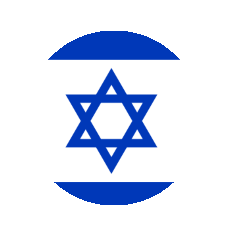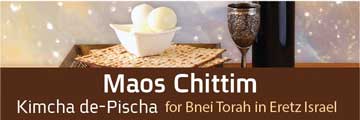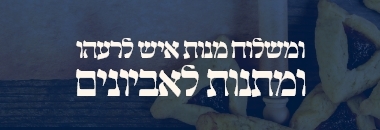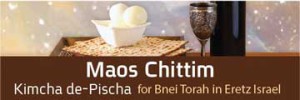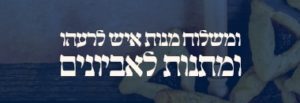Eating Dairy Foods: Commemorating the Shtei Ha-Lechem
As noted, it is customary to partake of dairy foods on Shavuos. The principle reason given is that one should partake of two distinct dishes in commemoration of the “Two Breads” (Shetei Ha-lechem) offering of Shavuos.
The “Two Breads” are commemorated by starting the meal with dairy dishes, and mid-way through the meal continuing with meat dishes. For fear that the bread on the table came into contact with milk, there is a halachic requirement to remove the bread eaten during the dairy portion of the meal before eating the fleishig foods (See Shulchan Aruch, Yoreh Deah 89:4). Thus, a meal that combines dairy and meat foods requires two separate sets of bread, one for the dairy part of the meal and another for the meat part.
The Shtei Ha-lechem offering is commemoratedin this way by the two breads of the same meal(Rema 494:3). Those who eat separate dairy and meat meals will fulfill the custom in other ways given below.
Rav Moshe Feinstein (Iggros Moshe, Yoreh Deah 1:38) notes that the prohibition to eat a meat meal with bread eaten with dairy products only applies to pieces of bread that might have come into contact with dairy products. In contrast with small pieces and slices, a large loaf of bread on the table can be used during a meat meal that follows dairy foods, because the concern of contact with milk is not great enough to warrant changing breads. Nevertheless, although there is no obligation to remove the bread eaten with the dairy meal, it remains praiseworthy, and this might be sufficient to constitute a commemoration of the Shtei Ha-lechem offering.
To ensure that a new loaf of bread is used for the fleishig part of the meal, some bake bread with milk products (Mishnah Berurah 494:16), which of course must be removed before beginning the meat part of the meal. One who baked dairy bread must be careful to bake a distinctive shape for the bread, making the bread clearly recognizable as dairy. This halachah applies the year round, so that a person should not come to eat the bread with fleishig foods.
Additional Reasons for Eating Dairy Foods
An additional reason for eating dairy products is that at the time of Matan Torah the Jewish people became obligated in all of the mitzvos of the Torah. As such, in order to eat meat they would have had to produce kosher meat. Since this procedure requires time in order to properly prepare the meat, all that was available immediately after Matan Torah were dairy products. This is commemorated by the consumption of dairy products (Mishnah Berurah 494:12)
The Shalmei Todah (no. 2) writes an alternative explanation. Because the Torah was given on Shabbos (see Shabbos 87a), the need to eat dairy products can be attributed to the impossibility of preparing meat on Shabbos (meat requires cooking), while dairy products generally don’t require much preparation. Our consumption of dairy foods on Shavuos thus commemorates the situation of the first Shabbos, on which the Torah was given.
A further reason for the custom is to highlight the difference between the nation of Israel and Divine angels. As guests at the table of Avraham Avinu, the angels were not particular to separate between eating meat and milk. In response to the angels’ claim that the Israel was unworthy of receiving the Torah, G-d asked them: “Did you not descend upon Avraham, and eat milk and meat together?” (Midrash Tehillim Chap. 8).
Our meticulous separation of meat and milk thus demonstrates our being worthy of the Torah (Be’er Heitev 494:8; Mishnah Berurah 494:12-13). The Chok Yaakov (494) cites the Kol Bo that some are more lenient about waiting after meat than during the rest of the year, but he says that authorities agree that this must not practiced. On the contrary, one should be particularly meticulous on Shavuos to properly separate the two.
The Beis Ha-Levi (Yisro) explains further that the angels did not actually mix meat and milk, but rather were not meticulous in the various laws pertaining to eating meat after the consumption of dairy products. Therefore, on Shavuos, the custom developed to eat dairy products followed by meat. By combining dairy and meat foods with the proper meticulousness, we show that we are not like the angels, and we are indeed worthy of receiving the Torah.
Symbolism of Milk
Additional reasons are given based on the symbolic significance of milk.
Milk is a symbol of purity, its whiteness a sign of spiritual cleanliness. This is representative of the purity that the nation of Israel attains over the period of the Omer (Magen Avraham 494:6).
Moreover, the gematria of the word chalav (milk) is forty, corresponding to the forty days that Moshe spent on Sinai to receive the Torah, and the transcendent elevation he achieved during this time.
Furthermore, the consumption of dairy products (and of honey) recalls the verse “honey and milk beneath your tongue” (Shir Hashirim 4:11), which is stated concerning the Torah (Mishnah Berurah 494:13).
Rav Moshe Sternbuch (Moadim U-Zemanim 8:319) adds that before the Torah was given it was prohibited to drink milk, because it was considered a limb from a living creature (eiver min ha-chay). The permission we have to drink milk, a liquid for which the Land of Israel is praised, is a result of the giving of the Torah.
Separating Between Dairy and Fleishig Foods
The Shavuos meals present an opportunity to apply the laws of separating meat from milk.
If meat and dairy foods are to be consumed in the same meal, it should be done as follows: 1) Eat the dairy foods (they should not include hard cheeses which require a six hour wait before consuming meat) first, for it is prohibited to eat dairy foods after meat (Shulchan Aruch, Yoreh Deah 89:2); 2) Clear the table after completing the dairy part of the meal, or remove the tablecloth (ibid. 4); 3) Wash out your mouth (or drink something) and eat bread or something that clears the mouth of dairy residue (ibid. 2).
There is no need to recite birkas hamazon after eating the milk foods and before beginning the meat part of the meal. Although some authorities require this, the basic halachah and the general custom is not to be particular about this added separation (see Mishnah Berurah 494:16). Indeed, if it is not needed one should not recite birkas hamazon, because this will constitute an unnecessary berachah (she’einah tzerichah).
Beyond the above principles, one must ensure that one’s hands are clean (Shulchan Aruch, Yoreh De’ah 89:2). The Peri Chadash writes that those who are particular to eat with a knife and fork are not obligated to wash their hands, and this depends on circumstances.
Waiting Half an Hour
Finally, some authorities maintain that one should wait half an hour (see Hagahos Maimoni to Rambam, Maachalos Assuros 9:28) between the time one finishes eating dairy and begins eating meat.
The Shulchan Aruch makes no mention of an obligation to wait beyond the time it takes to wash out one’s mouth, but the Birchei Yosef (Yoreh De’ah 89:13) writes that it is customary to wait “one hour,” and this has a source in the Zohar (see Kaf Ha-Chaim, Orach Chaim 173:2). This appears to require a full hour’s wait.
However, the Maharshag (Vol. 1, Yoreh De’ah 13) writes that the expression sha’ah achas (“one hour”) does not necessarily mean a literal hour, but may also mean “a (short) period of time.” This is where the custom of waiting half an hour derives from (see Mateh Reuven 186; Moriah, Teves 5756, p. 79, citing from Rav Shlomo Zalman Auerbach).
Thus, according to the strict halachah, it is sufficient to cleanse one’s mouth with a liquid and a solid. Some are particular to wait a half hour even after washing out the mouth, and this is a worthy custom.
In Joy and in Service
Before ending, it is important to note that even though eating and drinking is a mitzvah, one should not spend the entire day eating and drinking, as the verse states, “It shall be Atzeres for Hashem” (Devarim 16:8).
The verse also writes that “It shall be Atzeres for you,” presenting a seeming contradiction to the above verse. The Gemara resolves the contradiction by stating that it is “half for you and half for Hashem” (Pesachim 68b).
Aside from the pleasures of the day, one must dedicate time to Torah study – the more so on Shavuos, the day on which the Torah was given (see Kaf Hachaim 494:9). The day is celebrated both with food and with dedication to the service of Hashem and study of His Torah.
May we merit to truly receive the Torah, each one his own part.

